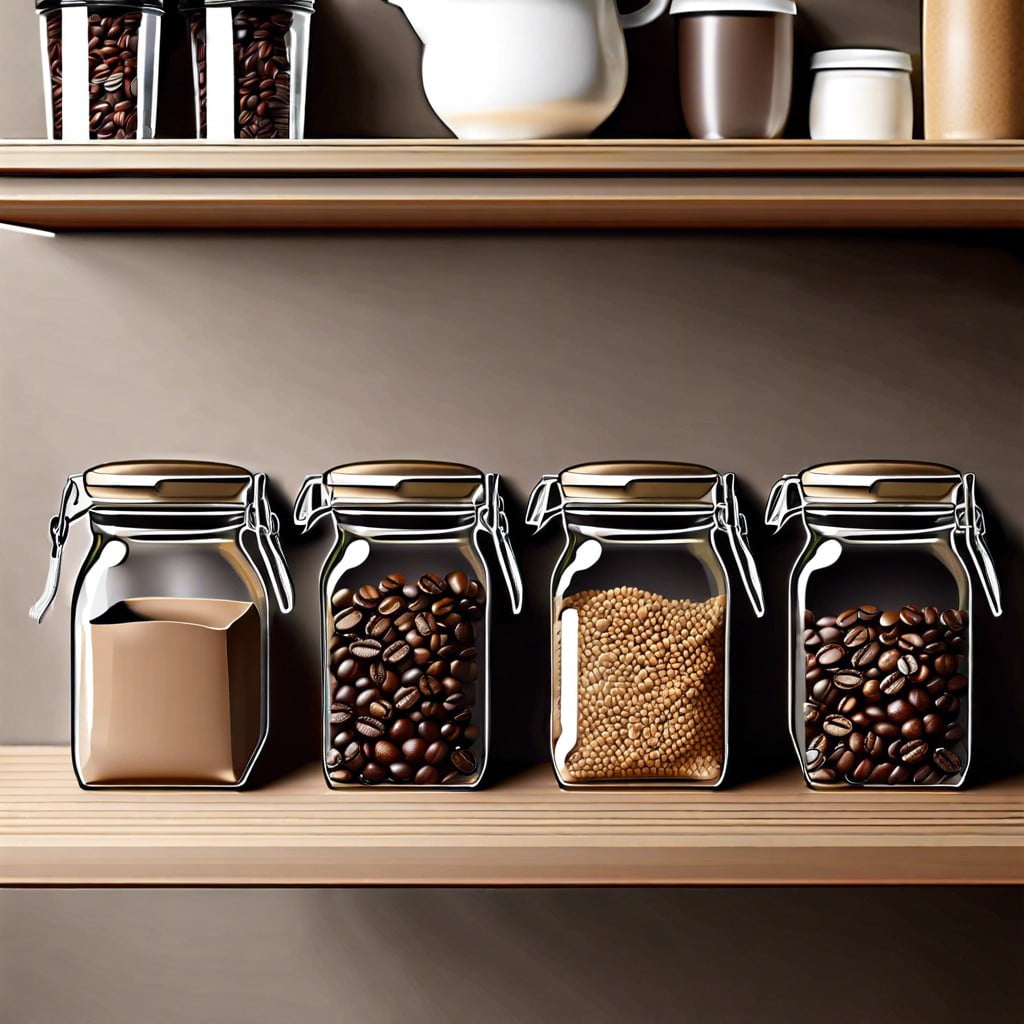Discover the truth about coffee’s shelf life and what factors can cause your beans or grounds to lose their freshness.
Understanding the Shelf Life of Coffee

Coffee doesn’t spoil in the way that perishable foods like dairy or meat do, but it does degrade over time. The factors that diminish its quality are exposure to air, moisture, heat, and light. These elements hasten the staling process by breaking down the oils and aromatic compounds that give coffee its distinctive flavor and aroma.
When coffee is roasted, carbon dioxide is created, and over time, it’s replaced by oxygen, which causes oxidation. Freshly roasted coffee goes through a process called degassing, which is why it’s often packaged with a one-way valve to release carbon dioxide without letting oxygen in.
The shelf life of whole bean coffee is significantly longer than that of ground coffee due to its reduced surface area. While whole beans can retain their freshness for about a month after roasting if properly stored, ground coffee may start losing its flavor just a week post-grinding.
For optimal flavor, consume coffee close to the roasting date and be wary of coffee that does not have this information available. The “best by” date, while helpful, is not as accurate an indicator of freshness. Remember, older coffee won’t make you sick, but it certainly won’t taste as good.
Proper Storage Methods for Ground Coffee and Coffee Beans
Ground coffee rapidly loses its freshness due to a larger surface area exposed to oxygen, heat, light, and moisture. To preserve its quality:
- Use airtight containers: Invest in containers with airtight seals to limit the oxidization process.
- Avoid clear containers: Opt for opaque storage to shield coffee from light, another freshness adversary.
- Keep it cool: Place the coffee in a cool, dark location away from direct sunlight or any heat sources. However, refrain from refrigerating or freezing coffee as these environments introduce moisture and can lead to flavor-sapping condensation.
For coffee beans, the approach is similar:
- Airtight and opaque: Like ground coffee, beans fare best in airtight, opaque containers.
- Cool and dark location: A pantry or cupboard away from the stove or oven is ideal for bean storage, maintaining a consistent temperature and avoiding light exposure.
- Grind as needed: By grinding only the amount you need when you need it, you ensure maximum freshness and a superior taste profile for each cup.
Both ground coffee and beans are best consumed within a month of opening for peak flavor and aroma.
The Coffee Bag Matters
The material and design of a coffee bag play crucial roles in preserving freshness. Oxygen, light, and moisture are coffee’s main adversaries, and a high-quality bag is designed to combat these elements. Most specialty coffee comes in bags with a one-way valve, which allows for the release of carbon dioxide without letting air in. This helps prevent oxidation, which degrades quality.
Opt for bags with a seal or zip-lock feature. Once opened, pushing out as much air as possible before sealing will help extend the coffee’s lifespan. Bags made of foil or with a foil lining are preferred over clear or purely paper ones, as they provide a better barrier against light and moisture.
Remember, investing a little more in a well-designed coffee bag can mean enjoying fresher coffee for longer.
Should You Buy Whole Beans or Pre-Ground?
Whole beans offer a fresher experience; when ground, coffee begins to oxidize and lose flavor quickly. Espresso aficionados tend to favor whole beans for their peak freshness which translates into a superior taste profile. They give you control over the grind size, suitable for your brewing method, whether it’s French press or fine espresso.
Pre-ground coffee saves time but sacrifices some quality. It’s convenient for those without a grinder or the inclination to grind their own. Pre-ground’s uniform consistency ensures that even a novice can easily achieve a good brew without much fuss. However, it’s essential to use it up relatively quickly, as it stales faster than whole beans, despite storage efforts.
The Best Way to Store Coffee At Home
To extend the freshness of your home coffee stash, maintain it in an opaque, airtight container. Exposure to air is coffee’s nemesis, causing flavor and aroma to deteriorate rapidly. A vacuum-sealed container with a one-way valve is pivotal as it allows carbon dioxide to escape without letting air in.
Light and heat are equally detrimental. Storing your coffee in a dark, cool spot, like a pantry or cabinet away from appliances, can help preserve its integrity. Avoid windowsills or areas where direct sunlight can prompt temperature fluctuations.
Consider purchasing smaller amounts of coffee more frequently. The allure of buying in bulk may lose its charm once the coffee’s peak flavor dwindles. Freshness is paramount, and regular purchases ensure you’re brewing the best cup possible.
Lastly, resist the temptation to refrigerate or freeze your coffee. This can introduce moisture and absorb flavors from surrounding food, compromising your coffee’s taste profile. Exceptional care results in an exceptional brew, so treat storage as a crucial step in your coffee ritual.